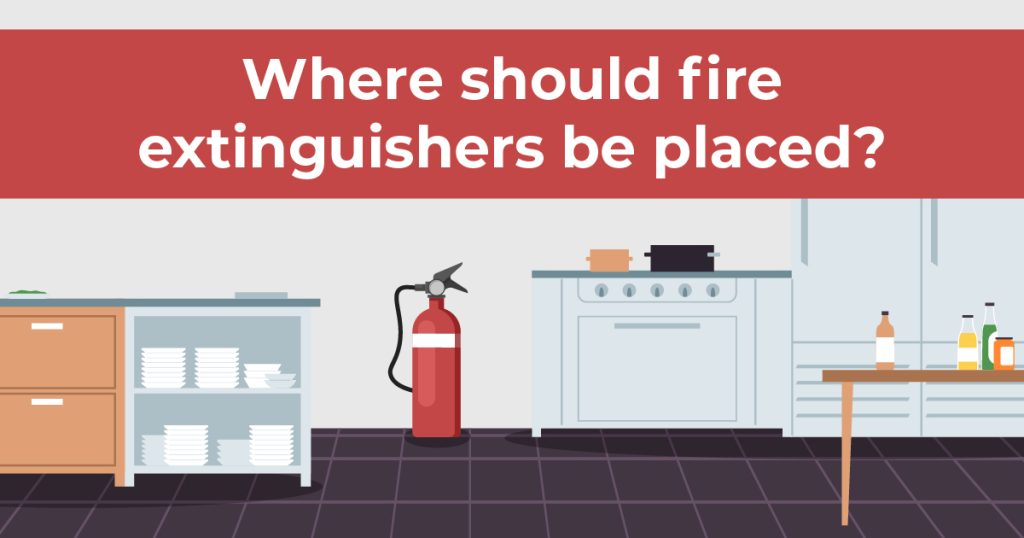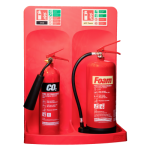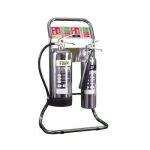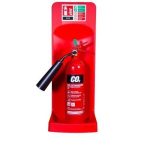Your cart is currently empty!
Where Should Fire Extinguishers Be Placed?
Fire can spread through a building in less than 30 seconds. This is an alarming fact and is part of the reason that fire extinguisher placement is so important.
Having the right fire extinguisher in the right place means that you or a member of your staff can safely and confidently tackle a small fire without risking injury. That’s why this month at Fire Safety Equipment, we’re going to explain the important considerations regarding the placement of your units and the consequences of not getting it right.

Important factors in fire extinguisher placement
Where you position your fire extinguishers can make a difference, and several important factors can help you with this.
- Keep them quick to access – You should keep your fire extinguishers in positions where they can be reached in seconds. We’ll talk more about this in our section on proximity to threats, but the faster a person can reach an extinguisher, the less chance there is for the fire to spread.
- Keep them visible – Sometimes, people think that extinguishers don’t complement the look of their building. However, they need to be kept visible and on display so that everyone who works and visits your premises is automatically familiar with their location in an emergency.
- Consider usability – If you have an extinguisher that is too heavy for anyone in that area to lift, this renders it useless, so consider the right weight for your staff. You should also make sure it can be easily removed from a mount so that there is absolutely no delay in someone being able to use it immediately.
- Keep them stable – A wall mount or floor stand should be used to keep the extinguisher in position at all times. It’s also a sign that it should not be moved unless in an emergency, removing the temptation to use an extinguisher as a prop. Another reason to follow this guidance is that any extinguisher that has fallen over may become damaged or could be a trip hazard in your building.
The initial commissioning of your fire extinguisher should be carried out by a competent person, as per BS 5306-3 (Clause 5.1), giving you the best initial positioning, with the above to be used if you’ve purchased extinguishers and are unsure where to site them.
Proximity to fire threats
Different buildings will have fire risks in different places, which is why the proximity to the individual threat has to be considered carefully. For example, an office may contain a server room, which presents a large electrical fire threat. This would require a CO2 extinguisher to be placed close by, but not in the server room itself as it should be safe to access in the event of a fire.
Similarly, a kitchen should have fire extinguishers positioned close by, but away from the cooking apparatus so that a member of staff can grab one without putting themselves in harm’s way. This is usually by the doors or exit so that people are encouraged to move away from the danger rather than towards it.
Consider the type of extinguisher and the risk
We’ve already touched on the subject of positioning fire extinguishers in relation to the risk, but there are some specific measurement guidelines from BAFE that you can follow, too.
As a general rule, extinguishers should be positioned so that a person doesn’t have to travel more than 30 metres to reach one. This distance applies to Class A and Class C fires, these are fires that involve organic solids and flammable gases respectively.
For Class B fires (those involving flammable liquids) and Class F fires (fires involving cooking oils and fats), the distance should be no more than 10 metres for someone to reach the right extinguisher.
You can learn more about the different fire classes and what they mean in our previous post here.
A certain amount of common sense should also be applied along with this, establishing an optimal position for the fire extinguishers you’re required to have. Excessive numbers of extinguishers are not necessary. If you’re unsure about how many extinguishers you need, which type you need and where to place them, it’s a good idea to invest in a fire risk assessment with a professional.
What happens if fire extinguishers are in the wrong place?
Fire extinguishers that are not placed in the best possible position could mean the difference between stopping a fire before it can take hold and devastation. Of course, it’s always better to have an extinguisher than to have no extinguisher at all, but it has to be accessed practically for use in emergencies.
You’re also legally obliged to provide adequate fire protection by The Regulatory Reform (Fire Safety) Order 2005. While it does not provide specifics on positioning, it does state that the responsible person for the building should “take measures for fire-fighting in the premises, adapted to the nature of the activities carried on there and the size of the undertaking and of the premises concerned”. This can be bolstered by the guidance of British Standards on the commissioning and placement of extinguishers. Failure to meet these legal duties could see you handed an unlimited fine and/or a prison sentence.
Find a full range of fire extinguishers all in one place here at Fire Safety Equipment. We stock a variety of extinguisher types and sizes to help you meet the risks within your building. Whether you own a restaurant, shop, warehouse, vehicle fleet or run a commercial organisation, we make it easy and convenient with fast, free delivery — it’s why so many people are making us their one-stop supplier for all their fire safety needs in the UK.
Order online today and protect people as well as your business.




